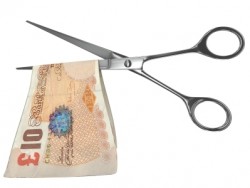 Hundreds of thousands of landlords will be hit by the Chancellor’s plans to scrap mortgage interest tax relief in 2017.
Hundreds of thousands of landlords will be hit by the Chancellor’s plans to scrap mortgage interest tax relief in 2017.
The move, announced in the recent Budget, will mean that many property investors lose 11 per cent of the gross returns from their buy-to-lets.
Should interest rates rise by the end of the year, as Governor of the Bank of England, Mark Carney, has indicated they might, landlords’ losses will be even greater.
Landlords are set to lose 25 per cent of their higher rate tax relief on their mortgages every year for three consecutive years until 2020, when all mortgage interest relief will be restricted to the basic rate of just 20 per cent.
This means that for every £100 in interest on mortgage repayments, landlords will have to pay £80, as opposed to the £55 higher tax rate payers currently pay.
The National Landlords Association has said that the Chancellor’s tax changes could reduce property investors’ net yields from 4.9 per cent to 4.3 per cent, if they are 40 per cent tax payers. Mortgage broker, London and Country, pointed out that on a property worth £160,000 with a mortgage of £120,000, the annual profit of £612 would actually become a loss of £588.
Buy-to-lets have trebled since 2005, particularly as other types of long term saving schemes have been disappointing, such as pensions.
Property investors have bought almost 1.7 million buy to lets with mortgages, offsetting their costs against rents to get tax relief at their own highest tax rate. Those paying the higher rate of 40 or 45 per cent tax, will see their mortgage tax relief phased out.
However, landlords are still able to claim a number of expenses to offset the income tax they pay, such as the costs of finding a tenant, building and contents insurance, maintenance and repairs following normal wear and tear, furniture, ground rent and council bills.
Representative 28.96% APRC (Variable)
For a typical loan of £26,600 over 180 months with a variable interest rate of 19.56% per annum, your monthly repayments would be £484.00. This includes a Product Fee of £2,660.00 (10% of the loan amount) and a Lending Fee* of £763.00, bringing the total repayable amount to £87,030.00. Annual Interest Rates range between 11.7% to 46.5% (variable). Maximum 50.00% APRC. *Lending Fee varies by country: England & Wales £763, Scotland £1,051, Northern Ireland: £1,736.
Think carefully before securing debts against your home may be repossessed if you do not keep up repayments on your mortgage or any other loan secured against it. If you are thinking of consolidating existing borrowing, you should be aware that you may be extending the terms of the debt and increasing the total amount you repay.

